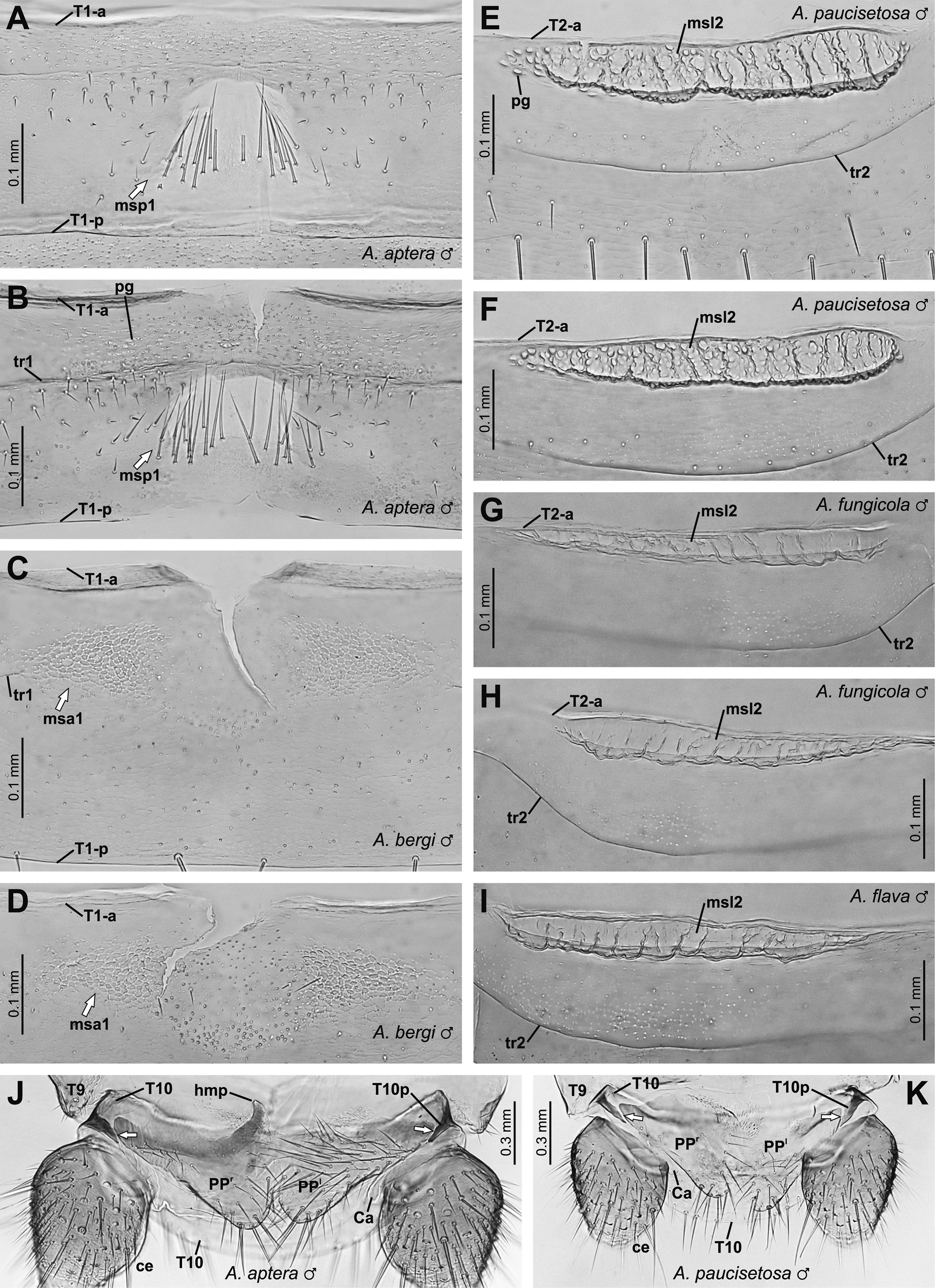
|
||
|
A‒I: Tergite specialisations of the males of Attaphila species, medially on T1 (A–D), or laterally at the anterior border of T2 (E–I), in E–G from right side of tergite, in H and I from left side. ― Species: A, B: A. aptera (Bo 1227, HT Bo 1258); C, D: A. bergi (Bo 1283, Bo 1274); E, F: A. paucisetosa (PT Bo 1254, Bo 1256); G, H: A. fungicola (LT Bo 1265); I: A. flava (HT Bo 1280). ― Abbreviations: T1-a, T2-a anterior borders of tergites T1,2; T1-p posterior border of T1; tr1, tr2 transversal ridges of T1,2; msa1 anterior median specialisation of tergite T1; msl2 lateral specialisation of tergite T2; msp1 posterior median specialisation of tergite T1; pg pores of glands, tiny in A, B, between T1-a and tr1, larger in E as part of msl2 specialisations. ― J, K: Paraprocts, tergite 10 and cerci in ventral view, of J: A. aptera (Bo 1224) and K: A. paucisetosa (HT Bo 1258). ― Abbreviations and arrows: Ca sclerite at mesal base of cercus; ce cercus; hmp hook-like mesal projection of paraproct; PPl, PPr left and right paraproct; T9 tergite 9; T10 tergite 10 with its ventrally bent lateral (paratergal) parts T10p (larger median parts of T10 out of focus); white arrows: articulation between mesal end of T10p and lateral end of paraproct. |